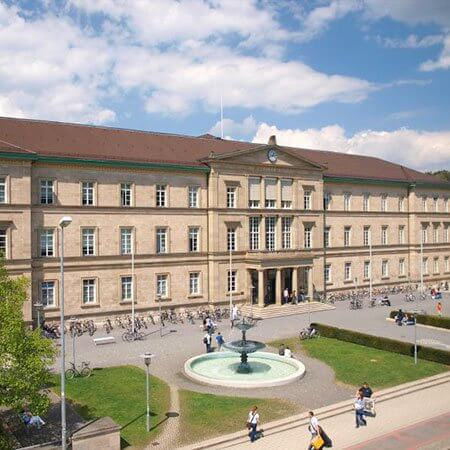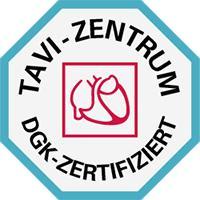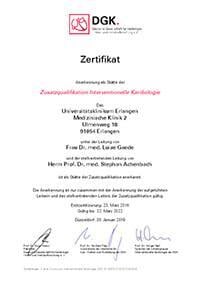This heart condition is characterized by impaired blood flow through a pathologically altered aortic valve. The information on the causes of pathology is varied; different conditions can activate the occurrence of AVI.
Content
- Types of aortic valve insufficiency
- Clinical manifestation
- Treatment options for AVI
- Advanced methods for treatment in Germany
- The prognosis for patients with AVI
- Best hospitals in Germany for the treatment of aortic insufficiency
- How much does the treatment in Germany cost?
- How to start treatment in Germany?
Types of aortic valve insufficiency
Chronic and acute aortic insufficiency are diseases that differ in etiology, clinical picture, prognosis, and treatment.
Chronic aortic insufficiency leads to the discharge of part of the blood volume back into the left ventricle, which causes an increase in the left ventricular end-diastolic volume in its wall. In response, eccentric left ventricular hypertrophy develops. Diastolic pressure in the left ventricle, despite the high end-diastolic volume, almost does not increase as long as the aortic insufficiency remains compensated. But left ventricular compliance gradually decreases due to myocardial fibrosis, and eventually decompensation occurs. As a result of constant volume overload, the systolic function of the left ventricle decreases, its end-diastolic pressure increases, its dilatation occurs, the ejection fraction decreases, and cardiac output decreases.
Acute aortic insufficiency rapidly leads to hemodynamic disturbances, as the left ventricle has no time to adapt to the sharp increase in end-diastolic volume. A sharp increase in diastolic pressure in the left ventricle causes early closure of the mitral valve, which prevents an increase in diastolic pressure in the pulmonary veins. However, further left ventricular dilatation increases, diastolic mitral regurgitation occurs, which leads to high pressure in the pulmonary veins and stasis in the lungs.
Clinical manifestation
Acute aortic insufficiency leads to a sharp disruption of hemodynamics and manifests itself by such symptoms as weakness, severe dyspnea, fainting, impaired consciousness. If acute aortic insufficiency is accompanied by chest pain, it is necessary to rule out dissecting aortic aneurysm.
Chronic aortic insufficiency is usually asymptomatic for a long time. After left ventricular dysfunction develops, symptoms due to venous stasis in the small circle appear as dyspnea on exertion, orthopnea, and nocturnal attacks of cardiac asthma. Due to left ventricular dilatation, a person often experiences unpleasant sensations in the chest, which may intensify during extrasystole and when lying down.
Dyspnea first appears at significant physical load, and then at rest (as left ventricular insufficiency develops). Dyspnea resembles cardiac asthma. Sometimes the course is suddenly complicated by pulmonary edema as a result of left ventricular insufficiency. Heart palpitations and dizziness develop in some cases.
In aortic insufficiency, angina is possible. Its development is predisposed to coronary artery lesions and reduced diastolic pressure in them, and also due to nocturnal bradycardia and marked left ventricular hypertrophy. Angina pectoris is the leading symptom in about 50% of patients with aortic valve insufficiency of atherosclerotic or syphilitic etiology.
Peripheral symptoms typical for severe aortic valve insufficiency and caused by large variations of impairment include pallor of the skin, distinct pulsation of carotid arteries, and pulsation of temporal and brachial arteries.
Another sign of severe aortic valve insufficiency is the Austin Flint murmur. It is caused by blood flow directed into the anterior leaflet, which causes vibration and noise, heard at the level of the femoral arteries.
Treatment options for AVI
At the earliest stages of aortic insufficiency, the patient usually does not feel any symptoms of the disease. If the outflow of blood is still insignificant and has no strong effect on the body, monitoring is recommended. But in this case, it is necessary to make periodic examinations to notice the progression of the disease in time.
Medication can be prescribed in the early stages of the disease. Drug therapy cannot eliminate valve failure, but it will help relieve symptoms and alleviate the condition. Also, drug therapy is usually prescribed to treat diseases that cause the development of aortic insufficiency and to treat related conditions. For example, with aortic regurgitation, it is important to pay attention to blood pressure impairment and treat hypertension.
Aortic valve insufficiency can often be compensated with long-term conservative therapy. But surgical correction should be performed before the development of clinically significant dysfunction. This improves immediate and long-term results of surgery and preserves the heart for repeated interventions, which are often required in aortic insufficiency. Timely surgical correction provides a 10-year survival rate in almost 90% of patients.
In cardiology, valve-sparing surgeries in most cases demonstrate better outcomes regarding immediate postoperative and long-term outcomes, as well as the quality of life of the patient as a whole. However, with the correction of aortic insufficiency, everything is a bit more ambiguous. Until now, the standard in cardiology worldwide is aortic valve replacement with mechanical and biological prostheses, rather than its correction. Most major domestic and foreign studies are also devoted to the comparison of the results of implantation of different prostheses, rather than the advantages of plastic repair over prosthetics or vice versa.
There are several aspects in terms of comparison of aortic valve replacement and aortic valve repair interventions:
- High frequency of recurrence of aortic regurgitation in the next 5-10 years after surgery for reconstruction becomes an indication for repeated surgery.
- The almost ideal structure of the valve cusps, their flexibility, absence of calcification are required for repair surgery, which is very selective.
- Increased requirements for qualification of cardiac surgeons and equipment of cardiology centers are necessary, as aortic valve repair surgeries are complex, and poor-quality performed surgery causes mortality in more than half of the patients in the six months after surgery.
- Aortic valve replacement with mechanical and biological prostheses provides high survival rates, a relatively low percentage of prosthesis-dependent complications, and restoration of the correct heart structure after surgery.
Advanced methods for treatment in Germany
Open-heart surgical aortic valve replacement is an established therapy for severe symptomatic aortic valve narrowing and insufficiency. The surgery reduces symptoms, improves vitality, and extends the life expectancy.
Patients with pronounced symptoms treated solely with medication have a poor prognosis. These patients develop severe comorbidities so that open cardiac surgery with an artificial circulation machine becomes simply impossible. Besides, the success of aortic valve replacement depends on many specific risk factors: comorbidities like heart failure, pulmonary hypertension, previous heart surgery, and, of course, the age of the patient.
So, currently, the treatment of various types of heart valve insufficiency is undergoing major changes, which has two main reasons. First, the number of cardiovascular diseases is increasing, and second, there is a growing number of catheter-assisted valve operations performed on the beating heart, whose promising application is being developed in various clinical investigations as an alternative to conventional cardiac surgery.
A newly developed method in this field is percutaneous valve implantation, which is currently under clinical investigation in various Cardiology Centers worldwide. The heart valve prosthesis is inserted with the help of a catheter. The advantage of this method compared to conventional surgery is that the valve can be implanted in the beating heart without the need for an artificial circulation device. This sparing method has numerous advantages for the patient like reduced time of surgery, minimal complications in "high-risk" patients, and fast postoperative recovery.
The basic principle is to implant a prosthesis through the femoral artery or the apex of the heart. In some patients, the lumen of the groin vessels is too small for transfemoral access. In this case, the aortic valve can be implanted transapically. This operation is performed under general anesthesia. The thorax does not need to be fully opened, and there is no need for a heart-lung machine.
The prognosis for patients with AVI
With asymptomatic aortic insufficiency, the prognosis is generally favorable. Statistical information has it that within 3 years after diagnosis, complaints occur in 10% of patients.
Some clinical information shows that with a severe and clinically apparent disease, sudden death arrhythmia caused by heart dysfunction or myocardial ischemia is possible.
Best hospitals in Germany for the treatment of aortic insufficiency
German medicine is considered one of the most advanced in the world, including its cardiology branch. Over 350,000 successful heart surgeries are performed in the German Cardiology Centers each year, following which patients return to their normal life. Hospitals in Germany have state-of-the-art equipment. This country develops cutting-edge cardio equipment, which is then sent not only to German hospitals (although, they are the first to appear there) but also to Israel, Switzerland, and other countries. Modern equipment makes it possible to conduct surgeries on a beating heart, and also not to use a device for artificial circulation. This reduces the risk of complications, which is especially important for elderly patients.
The peculiarity of cardiology in Germany is that there is a large percentage of minimally invasive procedures (with minimal disruption of tissue integrity), and surgical interventions are resorted to only in most extreme cases. Great attention is also paid to complex and maximally detailed diagnostics and rehabilitation in the German hospitals.
Besides, German cardiologists are among the most highly professional in the world, as the training standards for specialists in Germany are very high.
You can find more information about the hospitals for undergoing treatment in Germany on the Booking Health website.
How much does the treatment in Germany cost?
Many people are interested in the concrete information on the cost of diagnostics and treatment in Germany. Cardiology Centers in Germany conduct all types of cardiac diagnostics: ultrasound targeted diagnostics of cardiac diseases and examination of coronary heart vessels.
Keep in mind that the cost of treatment and diagnostics in Germany does not usually change. You may be offered additional examinations, in case new circumstances emerge during the diagnostics. In Germany, this is dictated solely by medical considerations, not financial ones. It is your right to accept and pay extra for the procedure, or to refuse it.
The average prices for the treatment are listed below:
- The cost of treatment with aortic valve repair surgery starts at 8,934 EUR.
- The cost of treatment with valve replacement starts at 9,909 EUR.
- The prices for diagnostics start at 477 EUR.
For more information regarding the cost of treatment with the specific method contact Booking Health.
How to start treatment in Germany?
Booking Health offers services for the organization of treatment in Germany, making the treatment journey as comfortable as possible for the patient.
Even if you have not decided to undergo treatment of aortic valve insufficiency in Germany, Booking Health will provide you with the information you need for free.
Fill in the request form on the Booking Health website for a medical advisor to contact you.
Authors:
The article was edited by medical experts, board-certified doctors Dr. Nadezhda Ivanisova and Dr. Sergey Pashchenko. For the treatment of the conditions referred to in the article, you must consult a doctor; the information in the article is not intended for self-medication!
Sources:
European Society of Cardiology
American Heart Association



















